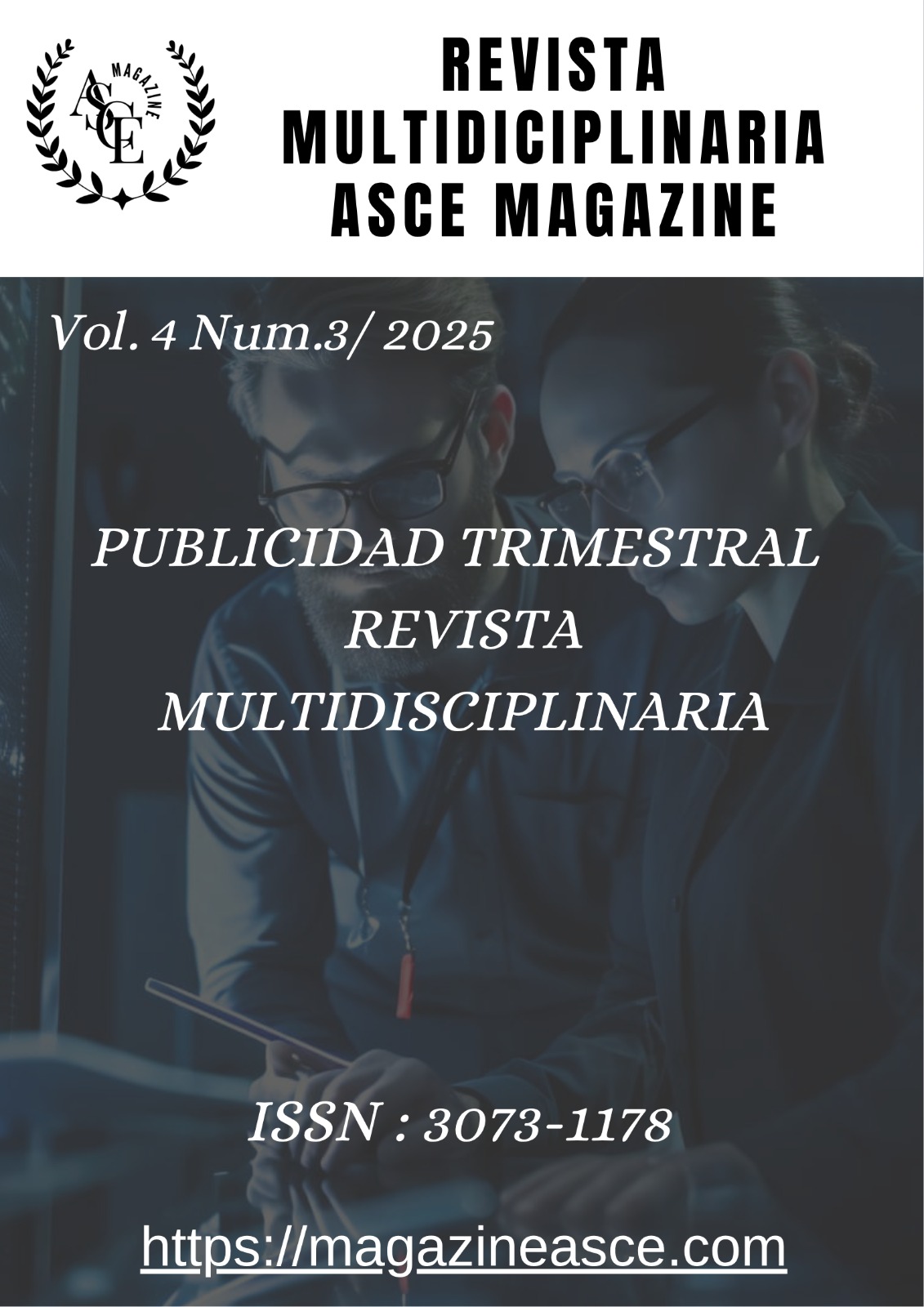Limitations of the LSTM Model in Electricity Demand Forecasting with Low Volume Simulated Data
DOI:
https://doi.org/10.70577/ASCE/240.260/2025Keywords:
Electricity demand, LSTM, ARIMA, machine learning.Abstract
The analysis evaluated the LSTM model to predict electricity demand, using a simulated set of 1000 points (42 days) with variables such as temperature, solar radiation and type of consumer (residential/industrial). The results show poor performance, with negative R² values (-0.0043, -0.1380, -0.0849) and high RMSE (29.23, 31.68, 30.52), indicating less accurate predictions than the average data. The model configuration (50 neurons, look_back=24) proved unstable, probably due to the limited size of the data set and the inability to capture relationships between variables and electrical demand. The literature highlights that LSTM models require large data volumes and careful optimization to be effective. Compared to ARIMA, a traditional statistical method, LSTM failed to capture complex temporal patterns. Challenges include data quality, model complexity, and integration with legacy systems. It is suggested to increase the size of the data set, adjust the model architecture and explore hybrid approaches (LSTM+ARIMA) to improve accuracy. This analysis highlights the importance of aligning model complexity with available data to optimize energy management in smart grids.
Downloads
References
Al-Haddad, Y., Abdu İbrahim, A., & Naeem, R. (2024). Forecasting energy consumption in smart grids: A comparative analysis of recurrent neural networks. Iraqi Journal for Computers and Informatics, 50(1), 123–132. https://doi.org/10.25195/ijci.v50i1.492 DOI: https://doi.org/10.25195/ijci.v50i1.492
Ali, B. M. (2023). Load predictions in electrical energy network: Current knowledge and future directions using machine learning. 2023 6th International Conference on Engineering Technology and Its Applications (IICETA), 589–595. https://doi.org/10.1109/IICETA57613.2023.10351352 DOI: https://doi.org/10.1109/IICETA57613.2023.10351352
Allal, Z., Noura, H., Salman, O., & Vernier, F. (2024). Predicting power consumption using machine learning techniques. 2024 International Wireless Communications and Mobile Computing (IWCMC), 1522–1527. https://doi.org/10.1109/IWCMC61514.2024.10592560 DOI: https://doi.org/10.1109/IWCMC61514.2024.10592560
Amat Rodrigo, J., & Escobar Ortiz, J. (2023). Skforecast [Computer software]. Zenodo. https://doi.org/10.5281/ZENODO.8382788
Belhaiza, S., & Al-Abdallah, S. (2024). A neural network forecasting approach for the smart grid demand response management problem. Energies, 17(10), 2329. https://doi.org/10.3390/en17102329 DOI: https://doi.org/10.3390/en17102329
Dahya, T. (2023, December 4). Using Machine Learning to predict US electricity demand: A comparison of two approaches. Medium. https://medium.com/@tdahya2/predicting-us-electricity-usage-a-comparison-of-two-approaches-34303b81a4aa
Duan, Y., Xu, Z., Chen, H., & Wang, Y. (2025). Novel machine learning approach for enhanced smart grid power use and price prediction using advanced shark Smell-Tuned flexible support vector machine. Scientific Reports, 15(1), 20909. https://doi.org/10.1038/s41598-025-05083-0 DOI: https://doi.org/10.1038/s41598-025-05083-0
Hussain, I., Ching, K. B., Uttraphan, C., Tay, K. G., & Noor, A. (2025). Evaluating machine learning algorithms for energy consumption prediction in electric vehicles: A comparative study. Scientific Reports, 15(1), 16124. https://doi.org/10.1038/s41598-025-94946-7 DOI: https://doi.org/10.1038/s41598-025-94946-7
Ibrahim, B., Rabelo, L., Gutierrez-Franco, E., & Clavijo-Buritica, N. (2022). Machine learning for short-term load forecasting in smart grids. Multidisciplinary Digital Publishing Institute. https://dspace.mit.edu/handle/1721.1/146313 DOI: https://doi.org/10.3390/en15218079
Jain, A., & Gupta, S. C. (2024). Evaluation of electrical load demand forecasting using various machine learning algorithms. Frontiers in Energy Research, 12, 1408119. https://doi.org/10.3389/fenrg.2024.1408119 DOI: https://doi.org/10.3389/fenrg.2024.1408119
Lee, S. (n.d.). Revolutionizing smart grids with machine learning. Retrieved July 10, 2025, from https://www.numberanalytics.com/blog/machine-learning-in-smart-grids
Machine learning for product demand forecasting—The guide. (n.d.). Slimstock. Retrieved July 10, 2025, from https://www.slimstock.com/blog/machine-learning/
Manav. (2023, December 22). The role of ai and machine learning in power price forecasting. Future Bridge Events | Conferences & Summits. https://future-bridge.eu/the-role-of-ai-and-machine-learning-in-power-price-forecasting/
Philips, A., & Jayakumar, J. (2023). Time-series based household electricity consumption forecasting. 2023 11th International Conference on Smart Grid (icSmartGrid), 1–15. https://doi.org/10.1109/icSmartGrid58556.2023.10170973 DOI: https://doi.org/10.1109/icSmartGrid58556.2023.10170973
Roy, K., Ishmam, A., & Taher, K. A. (2021). Demand forecasting in smart grid using long short-term memory. 2021 International Conference on Automation, Control and Mechatronics for Industry 4.0 (ACMI), 1–5. https://doi.org/10.1109/ACMI53878.2021.9528277 DOI: https://doi.org/10.1109/ACMI53878.2021.9528277
Strielkowski, W., Vlasov, A., Selivanov, K., Muraviev, K., & Shakhnov, V. (2023). Prospects and challenges of the machine learning and data-driven methods for the predictive analysis of power systems: A review. Energies, 16(10), 4025. https://doi.org/10.3390/en16104025 DOI: https://doi.org/10.3390/en16104025
Ugbehe, P. O., Diemuodeke, O. E., & Aikhuele, D. O. (2025). Electricity demand forecasting methodologies and applications: A review. Sustainable Energy Research, 12(1), 19. https://doi.org/10.1186/s40807-025-00149-z DOI: https://doi.org/10.1186/s40807-025-00149-z
Downloads
Published
How to Cite
Issue
Section
License
Copyright (c) 2025 Christian Paul Reyes Orozco, Cristian Luis Inca Balseca

This work is licensed under a Creative Commons Attribution-NonCommercial-NoDerivatives 4.0 International License.






























